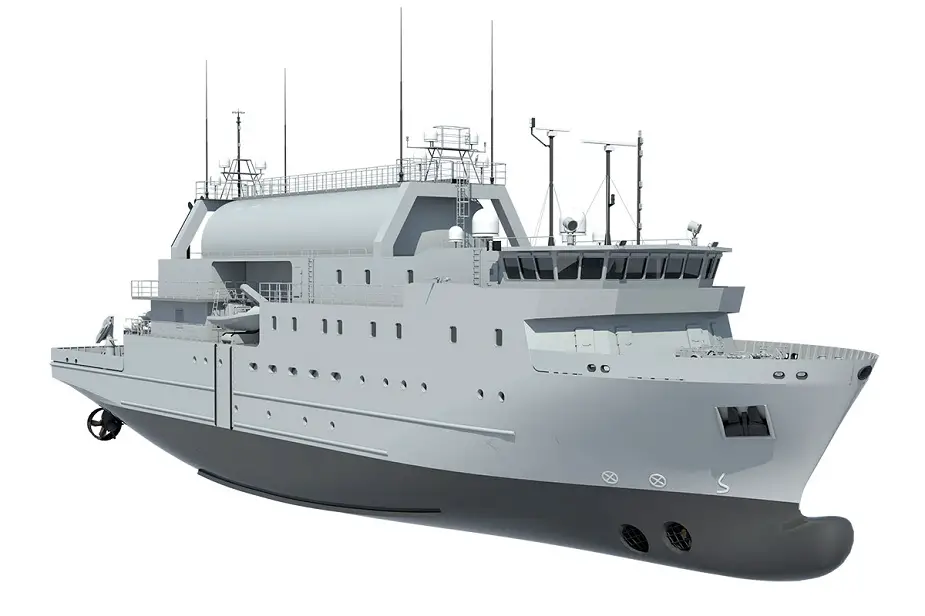Breaking news
Saab Announce Keel Laying of Swedish Navy’s Future SIGINT Vessel.
The keel-laying ceremony for the new Swedish signals intelligence ship took place last week at the PGZ Stocznia Wojenna, located in Gdynia, Poland. The event was attended by representatives from Saab, the Polish Armaments Group (PGZ) and invited guests.
 Saab CGI of the future SIGINT vessel.
Saab CGI of the future SIGINT vessel.
Saab was awarded the contract to design and build the SIGINT ship, which will replace the Swedish Navy’s existing HMS Orion, by the Swedish Material Defence Administration FMV in 2017. Subsequently it selected Nauta Shiprepair Yard, belonging to PGZ Group, to perform the construction, launch and early sea trials of the vessel. Cooperation in ship construction between Saab and PGZ is a direct result of the agreement, signed in late 2016, to establish a close partnership between Saab and PGZ in the planning and delivery of naval programs.
“Special purpose ships are primarily used for the interception and analysis of radio-transmitted signals and need to be highly reliable and available. Therefore you need highly skilled shipbuilders to build this kind of ship. We are very pleased with the progress of the construction process, and it was a pleasure to attend the keel laying ceremony at the Nauta Shiprepair Yard, our partner in this project,” explained Gunnar Wieslander, Head of Saab Kockums.
“The keel-laying ceremony was an important event in this special shipbuilding project, and we are pleased to celebrate it with our Swedish partners. We know the special purpose vessel is very important for the Swedish Navy and we are treating the construction as a high priority undertaking,” said Marcin Dąbrowski, Chairman of the Management Board, Nauta Shiprepair Yard.
The steel cutting for the ship took place in March 2018. Before the ship is delivered to the Swedish Navy, it will undergo final sea trials and installation of equipment with Saab Kockums in Karlskrona. The new ship, which will replace HSwMS Orion launched in 1984, will be 74 metres long with a displacement of 2,200 tonnes.


























